Easter in Jerusalem
For Christians, there is no doubt that Easter is the most spiritual holiday in their religious calendar - yes, it even trumps Christmas in the sacred stakes! Why? Because this is the time of the year that the crucifixion, burial and resurrection of Jesus, the son of God, is commemorated and celebrated. They last for a period of time known as ‘Holy Week’ commemorating the events before and after the crucifixion.

Easter celebration. Photo by freestocks on Unsplash
In late March or early April each year (depending on the calendar), thousands of pilgrims from all denominations descend upon Jerusalem for a period like no other. Taking place within the walls of the Old City, and at the Garden Tomb (which is open for visits throughout Holy Week (8:30 am to 12 noon and 2 pm to 5:30 pm) they recreate scenes from the last week of Jesus’s life, culminating in a solemn procession on Good Friday and a great celebration on Easter Sunday. Let’s take a look at how the week unfolds and some of the rituals the make Easter in Jerusalem so special and moving for Christians…
Palm Sunday
Palm Sunday always falls one week before Easter. It is the first day of’ ‘Holy Week’ and is a festival that commemorates Jesus’ triumphant entrance into Jerusalem. According to all of the Gospels, Jesus rode into Jerusalem on a donkey and was greeted by his followers who all waved palm branches to celebrate. Historically, the palm branch may have been a symbol of victory and triumph and the donkey seen as an animal of peace (not war, as would have been a horse).
Today, in the Old City, pilgrims recreate this scene as part of the Jerusalem Palm Sunday Procession Tour Beginning at the Mount of Olives, descending into the Kidron Valley and Gethsemane Garden, pilgrims walk solemnly through the Lions' gate and into the Old City. They proceed along the Via Dolorosa where Jesus walked his last steps before arriving at the cross. All along you hear cries of ‘Hosanna’ from the crowds.
The procession is led by leaders of the Catholic Patriarchate (in brown robes), the Latin Patriarch (in purple robes) and the Greek Archbishop (in black robes). All along the way, the route is lined with Christian pilgrims (both local and those who have travelled from across the world) reciting blessings and singing songs. It is a very colourful and interesting ceremony, which culminates at St. Anne’s Church.
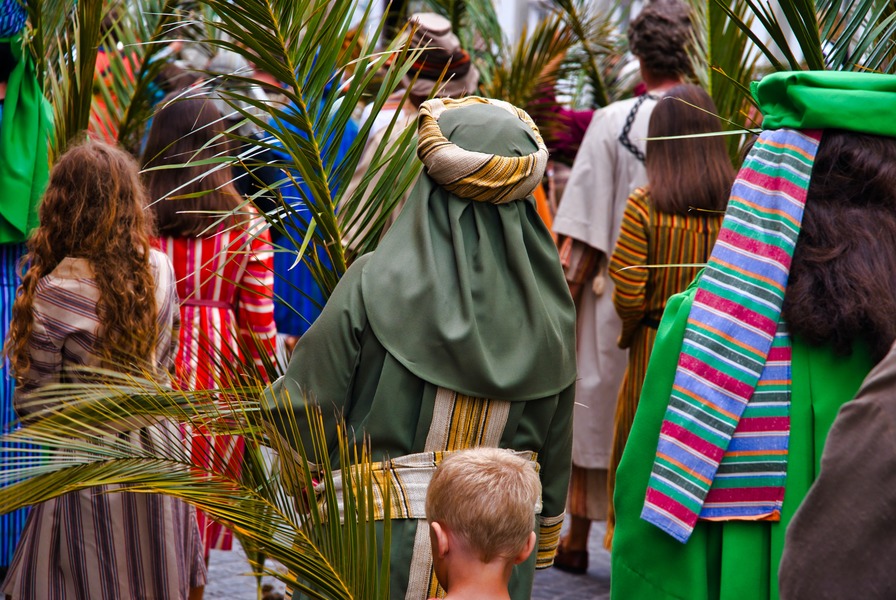
Palm Sunday Procession. Photo by Brady Leavell on Unsplash
Maundy Thursday
Maundy Thursday is also known as Holy Thursday and its name derives from the Latin ‘mandatum’ which means ‘command’. This ties up with Jesus’ commandment to his disciples “Love one another, as I have loved you.” This day, in essence, commemorates three major events:
1. It is the day Jesus and his disciples sat down to eat the Last Supper. During this meal, Jesus took bread and wine and shared them with everyone at the table. Today, Christians around the world of all denominations continue to use bread and wine in their services of worship (such as the Eucharist and Mass).
2. Furthermore, on Holy Thursday, according to the Gospel of John, Jesus washed the feet of his apostles. This act has different meanings - to show that as an important person, Jesus practised humility and love to others. Some Christians also regard it as a way of seeking reconciliation with someone before taking communion. Today, there is a traditional Washing of the Feet ceremony carried out in the Church of the Holy Sepulchre.
3. Finally, this is the day in which Jesus was betrayed in the Garden of Gethsemane, after being betrayed by Judas. This was, for sure, a pivotal moment in Christianity.
Today. In Jerusalem, pilgrims celebrate Maundy Thursday at the Room of the Last Supper (the Upper Room), located on Mount Zion. Some even hold an all-night vigil there, remembering Jesus’ hours in Gethsemane. In terms of the churches themselves, a Pontifical Mass (Supper of the Lord and Mass of the Chrism) is held at the Church of the Holy Sepulchre early in the morning.
In the afternoon, in and around the Old City, there are pilgrimages from one church to another followed by services of the Washing of the Feet. Typically, the route of procession passes by the Church of All Nations, through the Lions' Gate, into the Old City and along the Via Dolorosa. All along the way, pilgrims sing songs in a number of languages and pray.
Room of the Last Supper. Photo credit: © Shutterstock
Good Friday
Good Friday (also known as Holy Friday and Great Friday) is a very solemn - and incredibly important - day in the Christian calendar, marking the death of Jesus by crucifixion at Calvary (Golgotha). Many members of the various Christian denominations attend church services, abstain from eating meat and even fast. In the Roman Catholic, Lutheran and Anglican tradition, there is a service held between 12 and 3 pm, called ‘The Three Hour’s Agony’ (alluding to the hours Jesus was on the cross).
In Jerusalem, each year, thousands of pilgrims descend on the Old City early in the morning, either to be part of the procession itself (tickets are numbered, limited and much sought after) or to pack the streets for a view. The procession itself is a recreation of the route Christ took, retracing his final steps on his way to the cross.
The procession begins at the Mount of Olives, entering through the city walls and tracing its way along what is known as the Via Dolorosa (in Latin, ‘The Path of Sorrows’). Known as ‘the Way of the Cross’ it begins at 11.30 am at Station.1. The Stations of the Cross (14 in all, 8 en route and 6 in the Church of the Holy Sepulchre) refer to various images relating to Christ’s journey and his suffering as he walked this path.
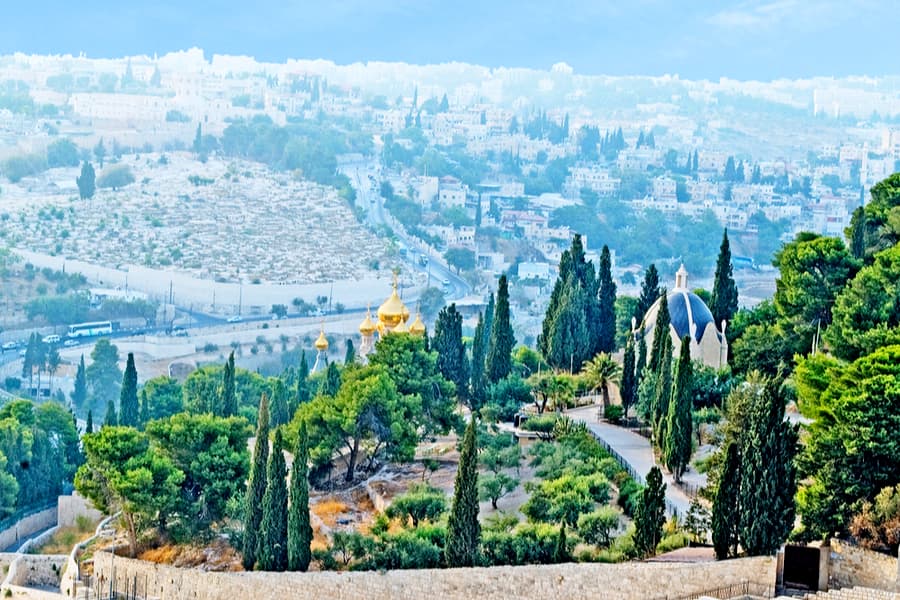
Mount of Olives. Photo credit: © Shutterstock
In the Old City, many pilgrims carry wooden crosses, sing hymns as they walk and often stop to recite prayers at each station. This is to symbolically offer ‘reparations’ for the insults and suffering that Jesus had to endure on his last journey which is estimated to have lasted 1.5 km (from Gethsemane to Calvary). The atmosphere is solemn and charged - many Christians, afterwards, describe it as one of the most moving moments of their lives.
At the Church of the Holy Sepulchre, the service is broken down into several parts: the Liturgy of the Word (carried out in silence). The Great Intercessions, the Adoration of the Cross, Communion (or Mass). Within this time, the liturgy will also include readings of the Gospel Passion narrative. After the ‘Three Hour’s Agony’ service - between 12 midday and 3 pm - vespers are read, to commemorate the time Christ’s body was taken down from the cross.
Traditionally, on Good Friday, many Christians in Jerusalem will not eat meat or even fast entirely (to show their sorrow), will not perform any work, including washing clothes, breaking ground or playing with children. Since сhurches of the Old City of Jerusalem are open for the entire day, some pilgrims will spend much of the evening or night in contemplative prayer.
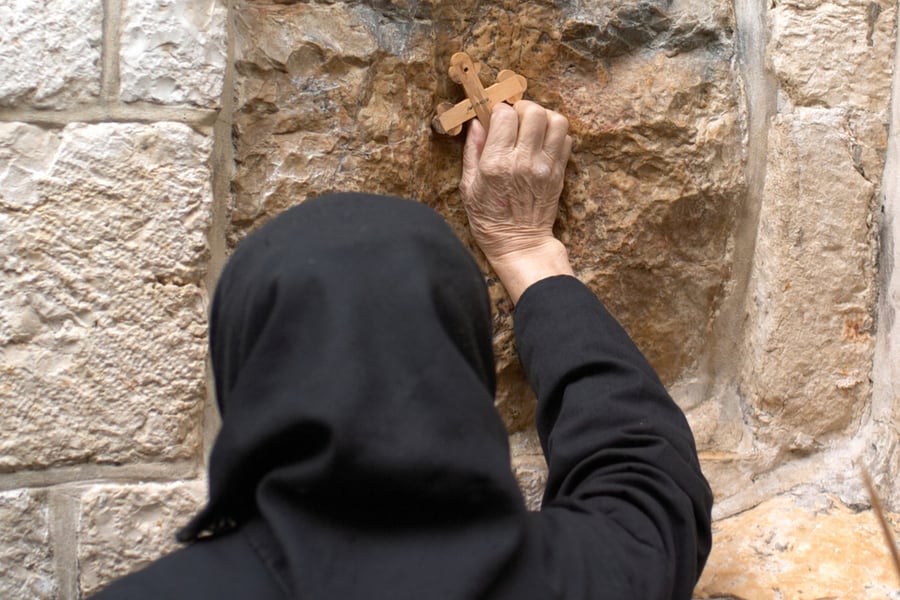
A pilgrim in Via Dolorosa. Photo credit: © Shutterstock
Holy Saturday
For Orthodox communities, this day is known as Holy Saturday (‘Saturday of Light’) and each year in Jerusalem, it is commemorated with a ceremony named the Holy Fire Ceremony. This is held in the Church of the Holy Sepulchre - it is a popular ritual that is well attended by Christians from across the denominations.
According to Orthodox tradition, at this time a blue light emanates from the tomb of Jesus and rises up from the marble slab (upon which his body was placed for burial). It is believed that the light forms a column of fire and, as a result, candles can be lit from it, both for the clergy and pilgrims in attendance.
It is also thought that this ‘Holy Fire’ will not burn them and can be used to spontaneously light other candles and lamps in the church. In the darkness, the Patriarch kneels in front of the stone, and the crowd waits anxiously. When he emerges, with two candles lit, his audience breaks into applause and cheers with joy.
The dome of the Church of the Holy Sepulchre. Photo credit: © Shutterstock
Easter Sunday
The final day of the Holy Week culminates in enormous celebrations - commemorating the day that Christ rose from the dead. In Jerusalem, celebrations begin early - at 7 am - with the entry of the Latin Patriarch into the Church of the Holy Sepulchre. An hour later, the Mass of Resurrection is held and this includes a procession around the Rotunda. The service begins in darkness and one by one candles are lit.
The Priest will state ‘ Christ is risen’ and the congregation will respond "He is risen indeed". All heads of the various Churches in Jerusalem will wear their brightest robes, in celebration, and bells will peal out. People pray individually and collectively. Protestants celebrate with an Easter sunrise service at the Garden Tomb. The week following Holy Week the Orthodox Christians (including Armenian, Coptic, Ethiopian, Syrian and Russian Orthodox) celebrate Easter with similar ceremonies and services.
Without a doubt, if you are thinking of making a trip to Israel, a visit at this time of the year is highly encouraged. Springtime is beautiful in the Mediterranean and, combined with the rituals enacted in this special week, you will have the opportunity to witness something quite unique in Jerusalem - something that is sure to stay with you for the rest of your life.
The best wat to visit holy Christian sites in Jerusalem is to join one of Christian Day Tours.
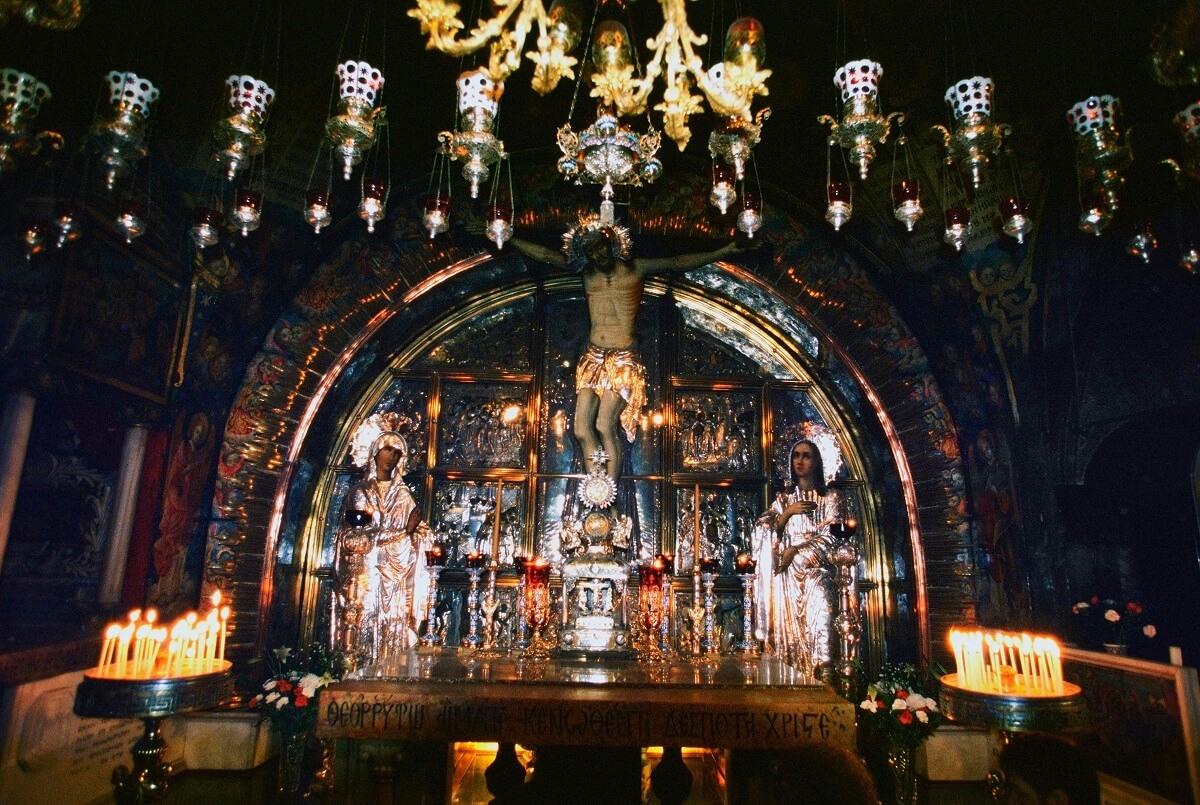
Inside the Church of Holy Sepulchre. Photo credit: © Shutterstock
 Login / Register
Login / Register
 Contact Us
Contact Us
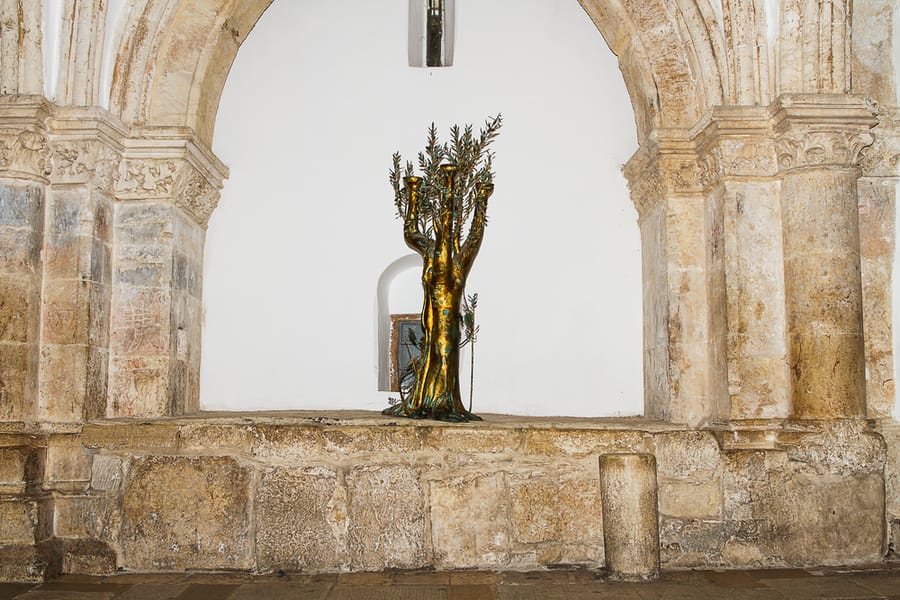
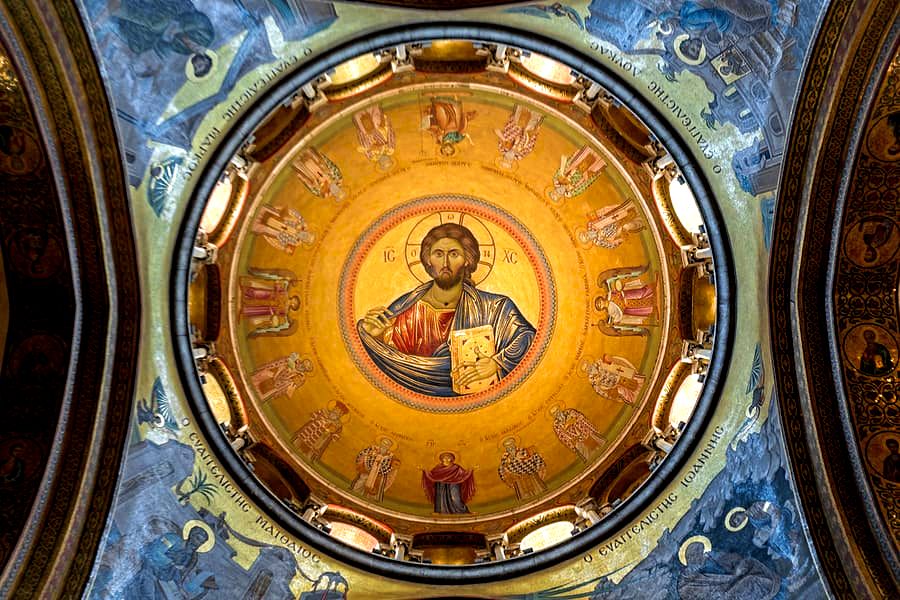
 Certificate of Excellence
Certificate of Excellence Guaranteed Departure
Guaranteed Departure Low Prices Guaranteed
Low Prices Guaranteed 24/7 Support
24/7 Support




